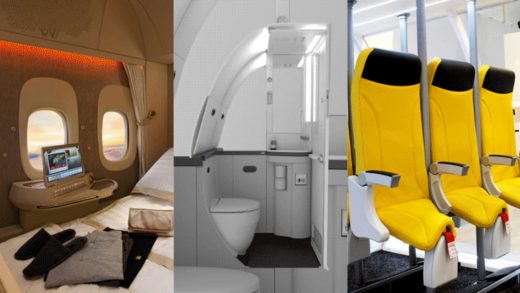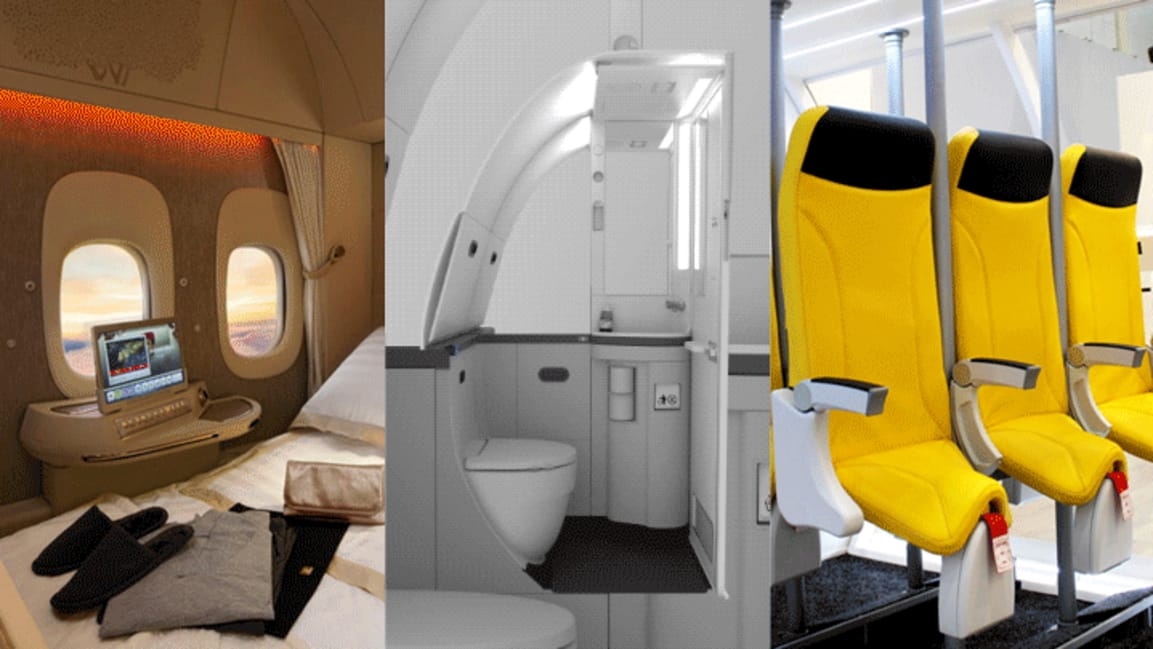The best and worst air travel ideas of 2018
Air travel sucks. Yes, it has become democratic since the exclusive glamour of the early days, with inexpensive flights available to the masses. But in turn, airlines often alienate low-cost travelers. New airplane developments in 2018 only served to widen the gap between wealthy travelers and the rest of us.
Fortunately, not everything is bad news for the common globetrotter and city hopper. Let’s review, from best to nightmare:
Economy seat optimized for space and comfort
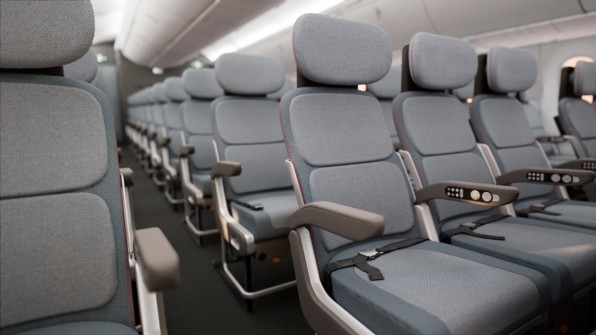
The Eco Seat–presented by London-based design studio PearsonLloyd at this year’s Airplane Interiors Expo in Hamburg, Germany–is a major evolution of the miserable economy airplane seat: it’s a thin carbon fiber composite shell supported by a hard central spine.
The spine integrates all the seat’s functional parts, like the AV module and an ingenious bifold food tray that saves even more space. The key to its comfort is in its spine’s curvature, which adapts to the human body to optimize both body posture and the available space around it.
Self-cleaning seats
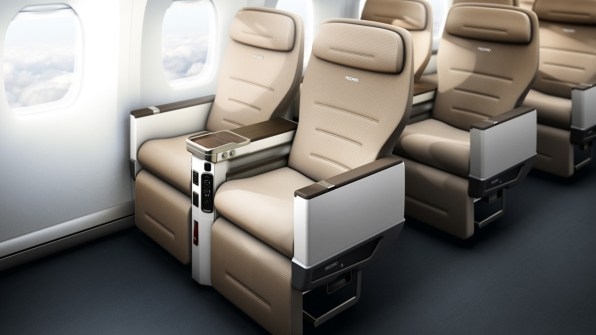
Meanwhile, in first and business class, people don’t have to worry about bifold trays and whether they can reasonably hold a plate of chicken marsala that could easily pass for gruel. Instead, they worry about germs from previous passengers. And Recaro Aircraft Seating’s self-cleaning airline seats can take care of that.
According to the company, its future top-class seats will have a mechanism to “destroy almost every germ on contact within seconds.” Not only that, but the seat will also be able to tell passengers how clean the seat really is by some undisclosed magicks.
Rocket airplanes
File this under, “It’s a nice dream if it ever happens, but it probably won’t happen, but this is really cool, but hey, Elon Musk.” What if you could travel anywhere in the world in a few minutes, without any kind of air turbulence, and watch the curvature of the Earth from space? That’s what Musk proposed earlier this year with his “Big Fucking Rocket” (now called “Starship”).
Yes, Musk wants to replace airplanes with rockets for long-haul travel around Earth. He claims tickets will be “about the same as full-fare economy in an aircraft.” Which is to say: 24 minutes to fly from New York to Shanghai for the price of an economy seat, and you get to see Earth from space. Can you imagine that? Yeah, me neither. But here’s hoping. It will not happen in 2019, but perhaps we will see a dream come true in the late 2020s or 2030s.
Electric airplanes
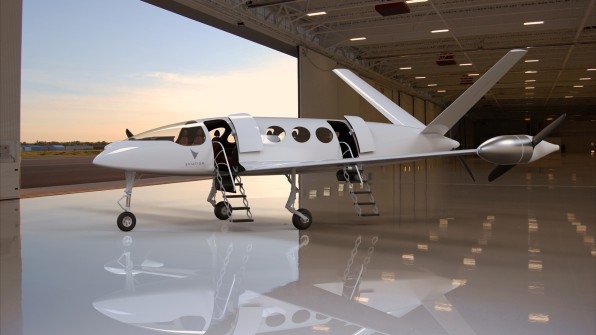
This will not be available for regular consumers for a very long time either, but it’s good news for the environment and, therefore, everyone: Eviation’s Alice Commuter plane–winner of the transportation category of Fast Company‘s 2018 World Changing Ideas Awards–is a fully electrical airplane that can take nine people on short trips for less than regular fuel-based airplanes.
The Israel-based startup believes that the airplane will be able to fly commercially in 2021, scaling up “to hundreds of routes across the U.S. over the next few years.” Crossing my fingers for this one, too.
Better airports
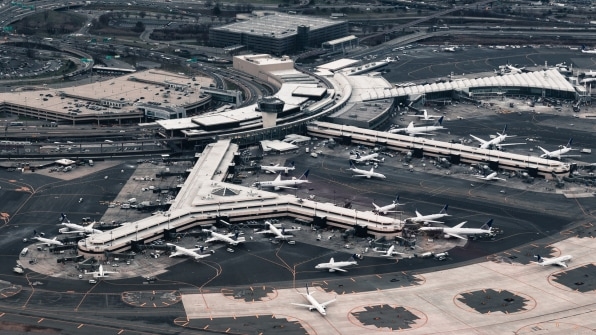
In 2018, architects thought deeply about how to make the airport experience better and optimize the flow of passengers–in other words, make airports feel less like hell on earth. Snarkitecture partner Benjamin Porto–who lives in New York, a city with some famously awful airports–came up with the idea of merging all New York airports into one master plan, both LaGuardia and JFK, and also Newark in New Jersey. For Porto, “It would be interesting to redesign JFK, LGA, and EWR together into one cohesive master plan [because] they are essentially the three Triumphant Gates of New York City and [they] should look as such.” While a hypothetical concept, Porto’s idea flicks at some of the bigger design challenges that architects have been tackling internationally and, fingers crossed, will take on in the United States, too.
Windowless planes
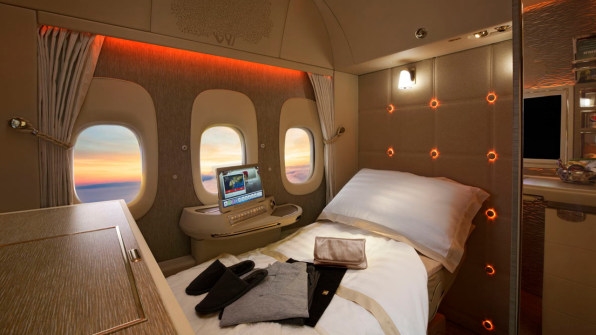
Windowless planes can be considered both a curse and a blessing for everyone. Its proponents, like Emirates airlines, think they can replace regular windows, which are heavy and therefore costly, without alienating consumers. In exchange, they promise cheaper travel.
Of course, this is all theory. And then there’s the psychological effect: Replacing windows with screens is not going to make anyone feel less claustrophobic. Perhaps people traveling in their own private cabins will not care and might find fake windows amusing but, for economy class, it will probably be an extra grievance in a list of many.
Tiny airline toilets
Another thing getting reduced: the airline toilet. Rockwell Collins’s Advanced Lavatory will save airlines seven inches of cabin space by reducing the available toilet space for, you guessed it, economy travelers.
The designers promise the same functionality in the reduced space due to some design legerdemain. Does it work as advertised? You will probably find out, as this will be installed in about 30% to 40% of all future Boeing 737 planes.
The airplane saddle
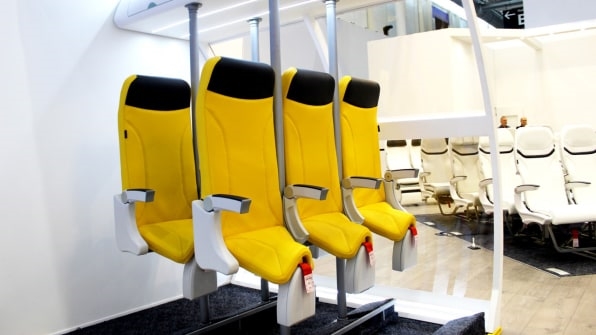
The Skyrider 2.0 is a standing seat for super-economy travel. There’s nothing inherently wrong with the design. And I’m sure that some people will accept it in order to shave more dollars off a ticket price. But I’ll still never sit on one. I say that because, while airline execs may have dreams about these comfy torture devices increasing their profit line, I doubt any company will have the guts to offer something like this in the real world, no matter how much space and weight it saves them. It’s just too extreme. After all, there are lines that nobody in their right mind will ever cross. Like charging money to allow passengers to use the bathroom or print you a boarding pass. Right? Oh, yeah. Right.
Fast Company , Read Full Story
(19)

